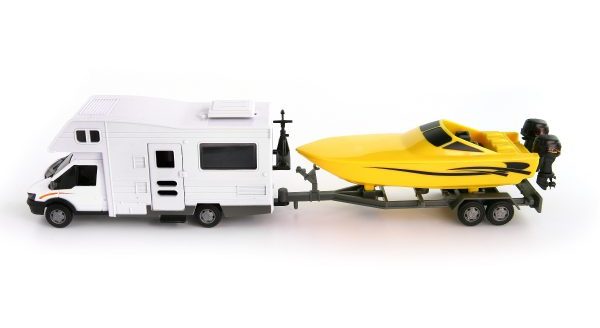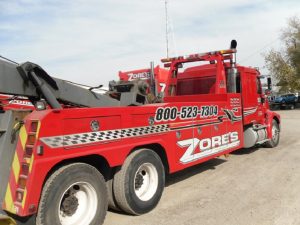Regardless of experience, a driver can encounter a loss of control over their trailer at any time. Whether from a sudden and unexpected gust of wind or a simple steering wheel over-correction, a swaying trailer is a very scary situation that can cause serious accidents on the road. Fortunately, there is a particular course of action you can take if you are ever faced with a fishtailing trailer; furthermore, there are products available on the market that can help prevent trailer swaying altogether.
Continue reading to learn some common causes of trailer swaying, how you can prevent it, and how to stop it when it’s happening to you.

Indianapolis Towing & Recovery 317-247-8484
Common Causes of Trailer Swaying
If your trailer is connected to a hitch that is located behind the rear axle of your vehicle, it is capable of swaying. Since the hitch is essentially the acting pivot point between the centers of gravity of the trailer and vehicle, any sudden force can send it into a swaying motion if it is stronger than the road tire friction for the drive wheels on your towing vehicle. This can lead to your vehicle to spin out of control or tip over. The same can happen to your trailer.
Additional Causes:
🗸 Crosswinds
🗸 Descending Hills
🗸 Incorrect Braking
🗸 Fast-Passing Large Truck Drafts
🗸 Over-Corrected Steering
🗸 Improperly Loaded Trailer
🗸 Unbalanced Trailer Weight
🗸 Exceeding the Towing Weight of the Hitch
What To Do if Your Trailer Begins to Sway
According to this National Highway Traffic Safety Administration (NHTSA), you should immediately engage your manual brake control override with your hands in the case that your trailer begins to sway. If you apply the towing vehicle or trailer brakes, it will only make the swaying worse, as will speeding up. Attempting to control the movement by turning the steering wheel can make it much worse as well.
Here’s What You Should Do:
➀ Slowly remove your foot from the accelerator to gradually reduce your speed.
➁ Hold on to the steering wheel to keep it straight.
➂ Wait for your vehicle to slow down and for the trailer to reduce swaying motion.
➃ Pull over to a safe spot and re-organize your cargo with more weight at the front.
➄ Continue driving, but at a reduced speed.
➅ Have your hitch inspected for defects and consider having it replaced with a weight distribution model.
➆ Consider having your brake control system upgraded too.
Indianapolis Towing and Roadside Assistance

Indianapolis Towing and Roadside Assistance 317-247-8484
